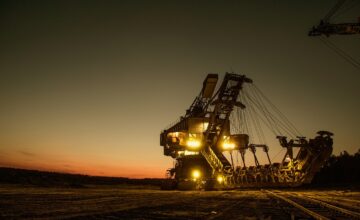What Indigenous communities should you be talking to? – Part 1
- 7-16-2019
- By Pilot Law LLP
Whether you are a business, municipality, financial institution, or investor involved in some aspect of mining, forestry, energy, transportation, or many other fields and you intend to undertake activities on “crown land”, and in some cases, private land—there are a number of questions you must consider regarding working with Indigenous people.
It is the law in Canada, and it is also the foundation of good business practice. Nevertheless, there are still companies, municipalities, financial institutions and investors that spend significant financial resources on projects without taking into account the rights and interests of the Indigenous people whose “traditional territory” is involved—and then as an “afterthought” ask the question—“What Indigenous communities should we be talking to?”
#1 – What First Nations should you talk to?
First, is to identify those First Nations who may assert that the Crown Land involved is their “traditional territory”. In other words which First Nations can demonstrate that the land area in question is where members of the community would have traditionally hunted, fished, trapped, or otherwise harvested from the land. It is a wider geographical consideration than “where someone lived”, and it is not unusual that more than one First Nation community can demonstrate that a given area of Crown Land was used for harvesting purposes. In Ontario, the Ministries of Northern Development and Mines, Natural Resources and Forests, and Indigenous Affairs and Reconciliation can all be helpful in answering questions re which First Nations should you be talking to.
#2 – Are there Metis or Non-Status communities that can also demonstrate a similar, historical relationship to the land – and you must consider?
Answering the “which First Nations” question is the good first step, but it is followed by other questions that are just as important. For example, are there Metis or Non-Status communities that can also demonstrate a similar, historical relationship to the land? Across much of Northern Ontario, where I grew up, there is a history of Metis and Non-Status communities that lived and harvested from identifiable land areas, and there are even instances of Metis communities holding lands with “reserve status”, so asking the question—“What about Metis and Non-Status communities?” is very important.
#3 – What Treaty governs the Crown Land in question?
Having identified particular Indigenous communities then leads to the question of what Treaty governs the Crown Lands in question. This is not a simple question because in Ontario, and in the western provinces[except BC] a number of individual treaties were developed between the Crown and the Indigenous people. For example. lands in Northwestern Ontario are covered by 4 separate treaties—Treaty 3, Treaty 5, Treaty 9, and the Robinson-Superior Treaty, and all of the Treaties, while similar, are not the same. Having a working knowledge of the Treaty is just as important as knowing which Indigenous communities, because the Treaty spells out the legal rights and obligations of Canada, Ontario, and the Indigenous communities involved. In some cases, the First Nations that are covered by a given treaty, may have made collective decisions about important questions to do with mining, forestry, hydro development, pipelines, hydro transmission towers, or highway construction, and may have developed a “general statement of principles” regarding these and other issues. So knowing what “Treaty” and what “Treaty organization” you must work with is important.
#4 – Is the First Nation an active member of a “Treaty Organization” or is it an “Independent First Nation”?
Another question which also must be asked is, whether a given First Nation is an active member of a given “Treaty Organization” or is an “Independent First Nation“? For example, the “Treaty Organization” which speaks for Treaty 3 is known as “Grand Council Treaty 3”. Grand Council Treaty 3 has an elected Grand Chief who speaks for the member First Nations on important issues, and the Grand Council has political, governance, and administrative responsibilities for the member First Nations. Meanwhile, there are other First Nations which are covered by Treaty 3, but see themselves as “Independent First Nations”, and actively assert there independence on most, if not all issues of governance, administration, and political decision-making. Clearly it is an important question – “does a particular First Nation work within the Treaty Organization?” – or does it work as an Independent?
What Indigenous communities should you be talking to is the first part of two questions/answers that must be thought about by companies, municipalities, and financial institutions that need to work with First Nations.
Email me if you would like to know more.
Regards,
 Howard Hampton
Howard Hampton
Colleague
Pilot Law LLP
hhampton@pilotlaw.ca
Connect with me on LinkedIn





 100 King Street W. Suite 5700, Toronto, ON M5X 1C7
100 King Street W. Suite 5700, Toronto, ON M5X 1C7
